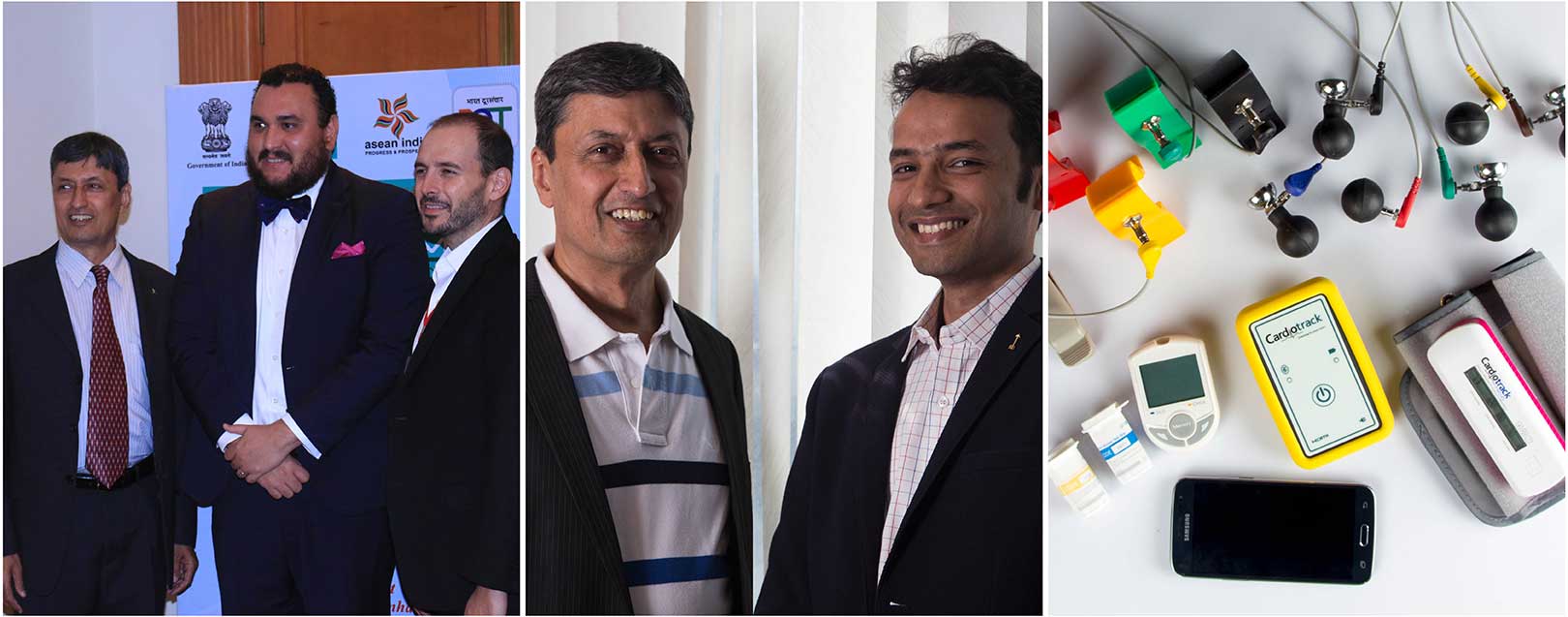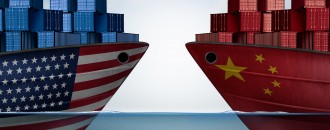
Need Govt support for overseas expansion: uber Diagnostics
Sheela Mamidenna
The new revolution unleashed by the combination of healthcare and technology is one that India is in dire need of. While India’s public healthcare expenditure is abysmal compared to China, whose population India is expected to surpass in the next 20 years, the country simply doesn’t have the professional or infrastructural capacity to deal with the growing incidence of cardiac problems in its population.
There has been a visible change in the Indian healthcare sector with renewed thrust from the government and a change in the needs of the people leading to an increase in healthcare services and products. But given the size and population of the country, the renewed thrust needs to be meted out with speed and action which is still missing.
Accounting for 2% of that in the USA, India’s per capita health spending is further suggestive of the need to move to affordable medical and diagnostic practices.
uber Diagnostics, incorporated in late 2012, is a health informatics company focused on leveraging AI, machine learning and data analytics to deliver solutions that will improve healthcare delivery. Using AI and automation, this start-up seeks to make diagnostics easily accessible and affordable at the level of primary healthcare.
It’s flagship product, cardiotrack, a portable cardio solution, is designed to record ECG readings and transmit them to doctors digitally for a speedy intervention. The same product line has been expanded to include sensors that monitor blood pressure and SpO2 (blood oxygen saturation level).
In an exclusive interview with Ashim Roy, Co-Founder and CEO, uber Diagnostics, The Dollar Business explores business challenges and opportunities facing modern healthcare-tech start-ups.
Unlike most traditional diagnostic products which are too sophisticated or expensive for the bottom rung users, uber Diagnostics works closely with medical professionals at the primary care level and first line responders. In co-ordination with direct beneficiaries, the company has managed to adopt several modifications which make their product easy-to-use (with just 20 minutes of training) and resistant to adversities like high temperature.
While there are many technologies around which can capture medical data, Ashim, commenting on their USP, said, “What is needed is analysis and interpretation of patient’s health vitals to provide predictive diagnosis and help the primary care physician initiate the steps towards intervention.”
“Our recent collaboration with French AI Company, Cardiologs, enables us to diagnose 100 different heart health problems within seconds of capturing the ECG. This capability sets us apart from anyone else (large or small) in providing a powerful tele-cardiology solution to millions who do not have access to quality diagnostic facilities,” he added.
Describing the acute shortage of cardiac care in India, Ashim said, “The country has only 7,500 cardiologists to attend to 60 million heart patients. Added to this is the logistics challenge of providing affordable and accessible healthcare to people 50 or 100 km away from major urban centres.”
“This makes Cardiotrack AI a game changer, one that is as accurate as any Cardiologist’s interpretation. Diagnostics will be automated to a degree where the primary care physician would be instantly provided with a list of medications that may be suitable for a particular condition,” Ashim elaborated on the potential of predictive diagnostics.
On Feb 21, 2017, uber signed a JV with Grupo Seara of Mexico, one of the largest entrepreneurial healthcare service companies in Mexico. Founded by Eduardo Serna Barragan, Grupo is likely to adopt the advanced cardiac centric technologies from Cardiotrack to deliver speedy and quality diagnostics to patients. Mexico and LATAM (mainly Argentina, Mexico and Columbia) are largely middle-income economies and the healthcare needs in these countries are similar to that of India.
According to Ashim, the market for chronic disease management in LATAM region is:
- 20 million patients
- 50K physicians
- $60 billion annual healthcare spend
- Total Addressable Market: $100 million
uber Diagnostics wants to draw significantly on cost advantages by manufacturing its hardware in Mexico, the manufacturing powerhouse of North America. Not only will overseas manufacturing ensure adherence to global healthcare standards, it will also give the company access to LATAM countries’ markets via Mexico’s trade treaties in the region.
As the strategic mind at uber Diagnostics puts it, “We plan to leverage manufacturing leadership of Mexico to create world-class products that will help compete in the LATAM market very aggressively.”
Apart from the LATAM region, the diagnostics solution provider is also keen on tapping markets in the ASEAN block. Lack of reach and funding is a key hindrance to the aspirations of Uber Diagnostics.
“We have shipped products to Argentina, Kazakhstan, Russia and Spain. However, the focus of the company remains 3 regions – India, ASEAN, and Mexico and LATAM. In Indonesia, if we had funds to get a product pilot started, we would now be negotiating the overall deployment issues with the ministry of health. Similarly, if we had the finances to kick-start manufacturing in Mexico, we would have our first product shipment on its way to LATAM by now. Some help from the government in providing financial wherewithal could go a long way in achieving these goals,” Ashim elucidated the financial constraints keeping startups from pursuing international expansion.
Another issue restraining foreign trade brought to light during the interview was India’s poor connectivity with its neighbouring countries. Due to the absence of direct flights to most South East Asian nations, the price competitiveness of the product is compromised, giving the Chinese an edge.
“The government has allocated $1 billion for trade promotion with ASEAN. There are 10 countries in the ASEAN group Brunei Darussalam, Cambodia, Indonesia, Laos, Malaysia, Myanmar, Philippines, Singapore, Thailand and Vietnam. We do not have direct flights to more than half of these countries. Today it takes more than 12 hours to go from Bangalore to Jakarta or Ho-Chi-Minh City. Myanmar has a common border with India and yet the fastest way to reach Myanmar (takes more than 12 hours) is via Singapore or KL. If we want to build stronger trade ties with regional countries, we have to improve people and goods movement process across the counties,” Ashim shared.
Specifically, in the case of Indonesia, Ashim said, “Many in Indonesia feel that the Indian Government’s initiatives on trade relationship with ASEAN are not in the interest of Indonesia. These sentiments must be addressed quickly so that we can start growing trade with the biggest ASEAN nation (biggest in terms of GDP and population).”
Though Trump’s protectionist policies have caused businesses all over the world to tremble with fear, Ashim couldn’t have cared less. When asked how it would impact shipments to America, he said, “We are not interested in taking away US jobs and we are reducing the cost of healthcare. We are doing everything Mr Trump expects us to do.”
“uber Diagnostics’ decision to set up a manufacturing facility in Mexico is based on these trade dynamics. America’s trade friction with Mexico makes Mexico and LATAM an excellent opportunity for us to benefit from. More barriers the US sets up against Mexico, more Mexico will increase its trade with other nations in LATAM,” he added.
Referring to the recent discussions on healthcare reform in the US, Ashim said that the focus on the need to reduce the cost of healthcare will create significant new opportunities for uber Diagnostics in the US market.
The co-founder also had plenty to say about how the Indian government could boost start-up morale in the country. Following is a wish list Ashim put up:
- Buy-in-India could be a great initiative for start-ups in India
- Component procurement needs to be simplified and should be tax/ duty-free
- Government assisted procurement programs to create higher volume can reduce the cost of manufacturing in India
- Government needs to invest in test facilities for product certification testing and make these accessible and affordable for various kinds of hardware that must go through international certification
- Access to International trade shows at nominal cost would be a great way to help Indian start-ups
- And, last but not the least there should be a Ministry for Start-ups that is able to make an investment in startups. The budget allocation of Rs 10,000 crore does not help start-ups, what really helps is when this money is invested in start-ups.
In addition to these demands, in appreciation of some of the ongoing schemes, Ashim said, “The Government has taken many initiatives to help start-ups. Activities of Export Promotion Councils have created awareness about India in the international markets. Other Government initiated programs such as Pravasi Bharatiya Diwas bring the focus back to India. These programs have helped start-ups find potential customers, investors, advisors and build cross-border relationships to expand their reach.”






 to success.
to success.